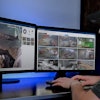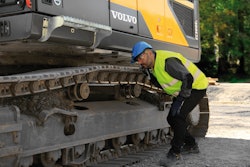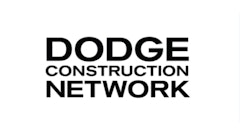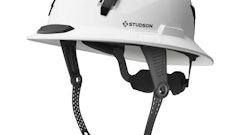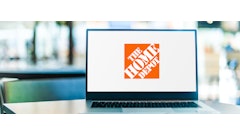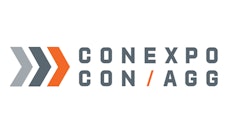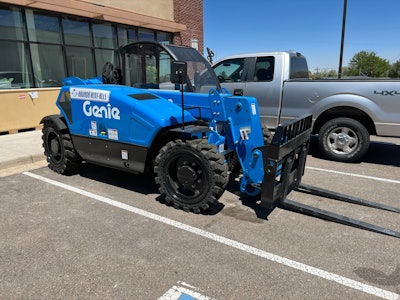
Telematics is more than just a buzzy type of technology. In some cases, it has helped rental companies prevent their equipment from being driven off construction sites, never to be seen again.
That was exactly what happened to Arvada Rent-Alls when one of the company’s Genie 5519 rental forklifts was stolen from a jobsite in Colorado on Jan. 1, 2023. The customer who rented the unit was on a work break and did not realize it was missing until Jan. 11, 2023.
Less than six months old, the machine may have taken up to a year to replace, not to mention the value of $70,000.
Unluckily for the thieves, they did not realize the forklift had been equipped with telematics.
“The unit ended up in Morgan Hill, Calif., 10 minutes away from a branch of A Tool Shed,” says Andrew Heesacker, president and CEO of Arvada Rent-Alls in Arvada, Calif. “Coincidentally, we have connections with the owners there, and both Robert Pedersen Sr. and Jr. were very happy to help as needed. The customer who had rented the forklift submitted a police report, and we contacted the county sheriff where the stolen unit was located in California.”
While all’s well that ends well for Arvada Rental-Alls, the incident underscored the importance of rental companies tracking their machines.
“Depending on where you are in the country, theft has been getting worse and worse,” says Tony Nicoletti, president of business development at DPL Telematics. “For us, in any given week, we hear from at least two customers that’ve had something stolen. A lot of times, people with telematics can just recover it and go on with their business.”
Not only will telematics help prevent theft, but it also can help boost rental companies’ bottom lines in other ways.
Nicoletti and David Swan, senior vice president of products at Trackunit, lay out how rental companies can incorporate this technology into their businesses and offer advice on how to onboard telematics effectively.
The benefits
Theft isn’t the only reason rental companies may want to restrict access to machines, according to Swan.
“Being able to lock out your machine based on who's supposed to have access is a big deal, especially when it comes to high-risk machines like aerials,” Swan says. “This just means that rental companies don't have the wrong people on machines that can potentially cause damages to other machines, structures or people. That can really increase the level of safety on-site. Also, when everyone knows that the activity of the machines is being recorded digitally, it changes behavior and gives a sense of accountability.”
In addition to theft prevention, telematics technology can help rental companies maximize equipment usage.
“You can track where your equipment is going, if it’s being used or not used, how much it’s being used to track service hours, and you also have the ability to remotely disable an asset,” Nicoletti says. “So, if you have a piece of equipment on rent and your customer decides not to pay their bills, like with utilities, you can cut it off.”
Swan agrees that knowing where equipment is can help rental companies ensure they’re making the most of each piece of equipment.
“If a piece of equipment is still in the rental yard but it’s marked on rent, that’s a problem. Conversely, if it’s marked off rent and is still on the jobsite, that’s also a problem. Those are places where profitability is lost,” Swan says. “That’s a less dramatic but more impactful issue that connectivity is solving. Everybody needs to know when that machine is done on a jobsite, so they can get it back, have it ready and redeploy it and not have to be on the phone with a driver who is picking it up or dropping it off.”
Of course, telematics also helps rental companies track when equipment is due for service, especially important, Nicoletti says, for longer-term rentals.
“Some of the biggest inefficiencies in our industry come from a lack of connection to the machine when it's on-site because ultimately, that means I have to send someone to the site to understand what’s wrong with the machine, where it is or what its run hours are to get any information from it,” Swan says. “Five years ago, if I had to service a machine, and it had been on-site for six months, I wouldn’t know the run hours on the machine and I’d be relying on the customer for that information, or I’d have to send someone to the site to write down the hours on a piece of paper, bring them back and put them into an Excel sheet.”
Overall, that process resulted in a lot of inaccuracy and missed service intervals, Swan says.
“Now, we have the machines in a modern rental fleet feeding their run hours over live data directly back to that ERP system, so it doesn’t matter if rental companies haven’t had access to a machine for six months. They have visibility,” Swan says. “Because of that, the rental company is incurring lower cost of ownership because its machines are going to have less frequent downtime, and they're going to have a better reputation as a rental company because their customers are happier.”
He says if the customer does encounter a problem while a piece of equipment is on rent, the rental company can do a remote investigation instead of putting the customer through a question-and-answer process.
“Telematics is better than the historical process where the rental company had to ask, ‘Is the machine doing this? Does it shake? Does the engine sound funny? Can you describe the sound to me in words?’ Now, they can enter the tracking manager and see what the last 24 hours of activity has been on that machine,” Nicoletti says. “They can see what the machine has been up to. They can solve these things over the phone, and if they can’t, at least they know what parts to bring and how big the problem is. We’ve really taken the level of response time, expectation and time to resolution and elevated that for the entire industry.”
What to consider
Before implementing a telematics system, Nicoletti says it’s important for rental companies to assess their needs.
“A lot of companies read an article about it and think it’s a cool thing that’s out there, but they don’t think about what they’re trying to accomplish,” Nicoletti says. “Maybe they want lots of data, but they need to think about what they’re going to do with it. Maybe they’re having issues with speeding or accidents, so they want to implement telematics on their trucks first and on their equipment second. Step back and take a 10,000-foot view of what you’re trying to accomplish before jumping in.”
Swan agrees that companies can break telematics implementation down into phases.
“There are steps in digital maturity,” Swan says. “The first step can be really simple like connecting run hours to an enterprise resource planning system and understanding where machines are from a geographical perspective. Then, rental companies can get into the more sophisticated digital process by integrating it into every single function of their businesses.”
Nicoletti adds that when shopping for a telematics solution, rental companies should look for an option that fits their current needs and future anticipated needs.
“They should look at it from a holistic view, but also look at a company that can grow with them,” Nicoletti says.
For rental companies still hesitant about adopting the technology, Nicoletti encourages them to just try it.
“There is no better time to be looking at telematics,” Nicoletti says. “There’s truly something out there for everyone, and like with all technology, it gets faster, more powerful and more important.”



